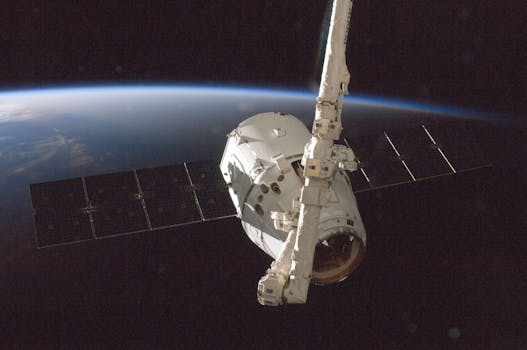
LEO Satellites: Revolutionizing Global Connectivity with WordPress
LEO satellites, or Low Earth Orbit satellites, are a type of satellite that orbits the Earth at an altitude of around 160 to 2,000 kilometers. These satellites have been gaining popularity in recent years due to their ability to provide fast and reliable internet connectivity to remote and underserved areas. With the rise of WordPress, a content management system that powers over 40% of the internet, LEO satellites are playing a crucial role in expanding global connectivity.
WordPress, being an open-source platform, has been widely adopted by developers and users alike, and its flexibility and customizability make it an ideal choice for building websites and applications that require high-speed internet connectivity. LEO satellites, with their low latency and high-speed data transfer capabilities, are the perfect complement to WordPress, enabling developers to create seamless and interactive user experiences.
How LEO Satellites Work
LEO satellites work by orbiting the Earth at a low altitude, which allows them to communicate with Earth-based stations and other satellites more efficiently. They use a variety of frequencies, including Ka-band, Ku-band, and C-band, to transmit and receive data. The low altitude of LEO satellites also reduces the latency of data transmission, making them ideal for real-time applications such as video conferencing, online gaming, and live streaming.
One of the key benefits of LEO satellites is their ability to provide global coverage, including in remote and underserved areas where traditional internet infrastructure is lacking. This makes them an attractive solution for governments, businesses, and individuals looking to expand their online presence and reach new audiences.
WordPress and LEO Satellites: A Perfect Combination
The combination of WordPress and LEO satellites is a powerful one, enabling developers to create fast, secure, and reliable websites and applications that can reach a global audience. With LEO satellites providing the high-speed internet connectivity, WordPress can be used to build complex and interactive websites, e-commerce platforms, and online applications that require low latency and high data transfer rates.
Furthermore, WordPress’s extensive library of plugins and themes makes it easy to integrate LEO satellite connectivity into existing websites and applications, reducing the need for costly and time-consuming custom development. This has made it an attractive solution for businesses and individuals looking to expand their online presence and reach new audiences.
Real-World Applications of LEO Satellites and WordPress
The combination of LEO satellites and WordPress has many real-world applications, from remote education and healthcare to disaster response and recovery. For example, in remote areas where traditional internet infrastructure is lacking, LEO satellites can provide the high-speed connectivity needed to support online education and healthcare services, while WordPress can be used to build the websites and applications that deliver these services.
In addition, LEO satellites and WordPress can be used to support disaster response and recovery efforts, providing critical communication and information services to affected areas. This can include building temporary websites and applications to coordinate relief efforts, provide critical information to affected communities, and support the deployment of emergency services.
In conclusion, LEO satellites and WordPress are revolutionizing global connectivity, enabling developers to create fast, secure, and reliable websites and applications that can reach a global audience. With their low latency, high-speed data transfer capabilities, and global coverage, LEO satellites are the perfect complement to WordPress, and their combination is set to play a major role in shaping the future of the internet.





